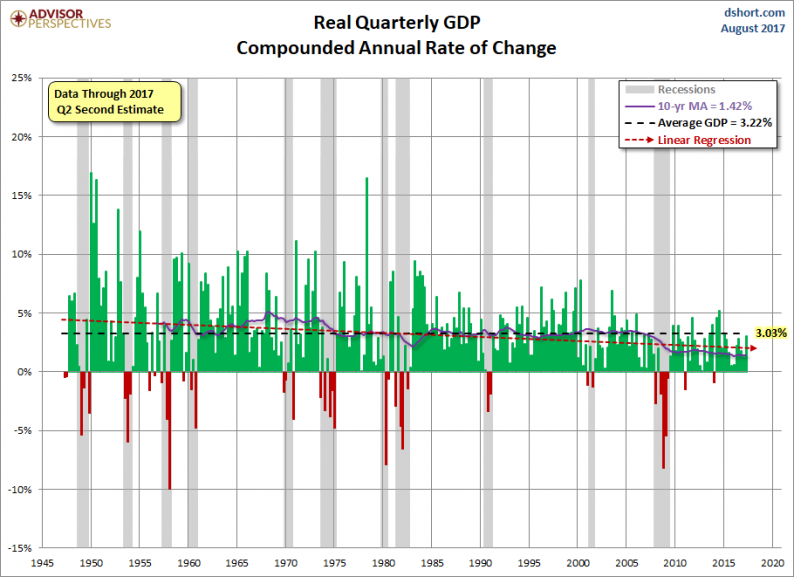The Second Estimate for Q2 GDP, to one decimal, came in at 3.0% (3.03% to two decimal places), an increase over 1.2% for the Q1 Third Estimate. Investing.com had a consensus of 2.7%.
Here is the slightly abbreviated opening text from the Bureau of Economic Analysis news release:
Real gross domestic product (GDP) increased at an annual rate of 3.0 percent in the second quarter of 2017 (table 1), according to the “second” estimate released by the Bureau of Economic Analysis. In the first quarter, real GDP increased 1.2 percent.
The GDP estimate released today is based on more complete source data than were available for the “advance” estimate issued last month. In the advance estimate, the increase in real GDP was 2.6 percent. With this second estimate for the second quarter, the general picture of economic growth remains the same; increases in personal consumption expenditures (PCE) and in nonresidential fixed investment were larger than previously estimated. These increases were partly offset by a larger decrease in state and local government spending. [Full Release]
Here is a look at Quarterly GDP since Q2 1947. Prior to 1947, GDP was an annual calculation. To be more precise, the chart shows is the annualized percentage change from the preceding quarter in Real (inflation-adjusted) Gross Domestic Product. We’ve also included recessions, which are determined by the National Bureau of Economic Research (NBER). Also illustrated are the 3.22% average (arithmetic mean) and the 10-year moving average, currently at 1.42%.

Here is a log-scale chart of real GDP with an exponential regression, which helps us understand growth cycles since the 1947 inception of quarterly GDP. The latest number puts us 14.7% below trend.

A particularly telling representation of slowing growth in the US economy is the year-over-year rate of change. The average rate at the start of recessions is 3.35%. Seven of the eleven recessions over this timeframe have begun at a higher level of current real YoY GDP.












Leave A Comment